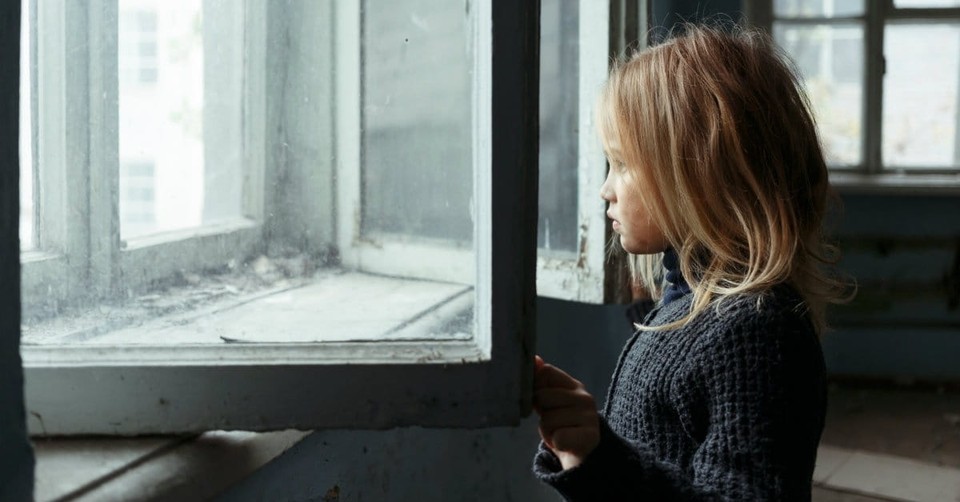Brothels, Survival, and Hope: A Different Mother's Day

Brothels, Survival, and Hope
Every day, around the world, millions of children are exploited through modern-day slavery. Human trafficking is the fastest-growing criminal enterprise in the world, following drug trafficking in total profits, which it is expected to pass in the near future. From factory workers in Bangladesh to brothels in Cambodia and Thailand, children are used to provide services from sewing to sex. The actual number of exploited children is unknown, but we know that factors such as lack of education, poverty, and desperation lend to the problem.
After becoming aware of the reality of modern-day slavery and the commercial exploitation of children, I traveled to India and came face to face with the evil of sex trafficking for the first time. There I met children as young as six who were being exploited in the sex trade. It was during this trip that I met twelve-year-old Enya and heard her story—sold by her own parents, who were driven by poverty and desperation. And yet despite the fact that this child had been sold into slavery by those she trusted most, Enya longed to see them and let them know that she was safe and doing well.
This episode illustrates the interface between maternal health, family planning, and child trafficking. According to Jeff Barrows, MD, director of Advocacy and Education at Abolition International, children arising from unplanned pregnancies are at far greater risk of trafficking. This twelve-year-old girl was sold into slavery because her parents could no longer provide for her. While poverty increases the risk of child trafficking, it also increases the risk of unplanned pregnancies due to the lack of access to reliable forms of contraception. As an ob-gyn physician and anti-trafficking advocate, Dr. Barrows is aware that family planning does reduce unplanned pregnancy and thus prevent certain cases of child trafficking.
Many of the children I saw struggled with life-threatening illnesses such as HIV/AIDS, and I was told by anti-trafficking workers in the field that in many impoverished villages there are almost no children over the age of ten. They are either sent to work in fields, factories, or brothels believing that the “opportunity” will help secure a better future for their families. I personally saw ropes tied to the bedposts in brothels, where women tethered their small children so that they would not crawl away while they worked servicing clients.
Still in other areas, such as Moldova in Eastern Europe, many children are abandoned when their parents leave to work abroad. Over 80 percent of Moldovans leave the area to find work because of limited opportunities at home, thus leaving their children in the care of orphanage personnel. This issue creates vulnerable children who age out of the orphanages and are desperate to find ways to support themselves. Many of these young teens are tricked to believe they are being sent to work in retail or attend university, only to learn later that they’ve been duped into working in the sex trade. It is important to emphasize that family planning can help parents have only the children they can afford and reduce the risk of abandoning those children into orphanages.
I have sat with many victims, both from faraway places to here in the United States, who have been exploited as a result of abuse and neglect often stemming from poverty. In many cases, their families are also caught in the same vicious cycle, willing to do whatever it takes to survive. Often times, their mothers are victims themselves, and some of the children are born out of unfortunate circumstances. Every victim desires reconciliation and love, the opportunity for healing, acceptance, and success regardless of their circumstances.
As a mother myself, I understand the relationship between mother and child. The bond between a mother and her child is one of the most powerful connections that exist. Most of us could not imagine ever making a choice that would cause harm to our children, but to thousands around the world, this nightmare is a reality. For many around the globe, the lack of educational programs, access to medical resources such as contraception and healthy lifestyle choices, overwhelming poverty, and violence drive mothers to situations where they have no options.
With more resources in impoverished areas, we could provide opportunities that would lead to life-altering options outside of slavery and exploitation. My hope is that more people—professionals and lay people—will link arms, develop materials that will lead to change, and give thousands a chance for a hope and a future.
Natalie Grant is a multiple Dove award-winning, Grammy-nominated singer-songwriter and the founder of Abolition International, a nonprofit organization dedicated to eradicating sex trafficking. She is a contributor to the recently-released “Mother & Child Project: Raising our Voices for Health and Hope,” a compilation from Zondervan Publishing on global maternal and child health issues, from which this piece was taken.
Publication date: May 6, 2016
Originally published May 06, 2016.





